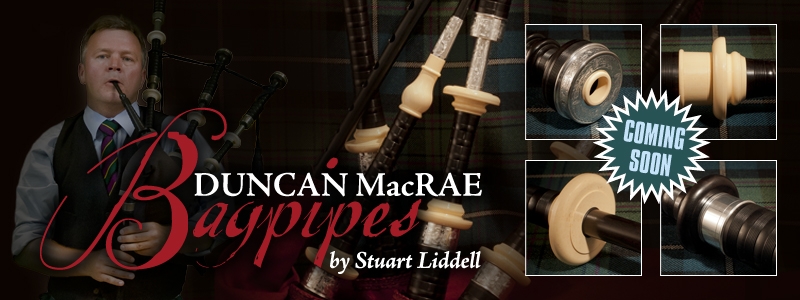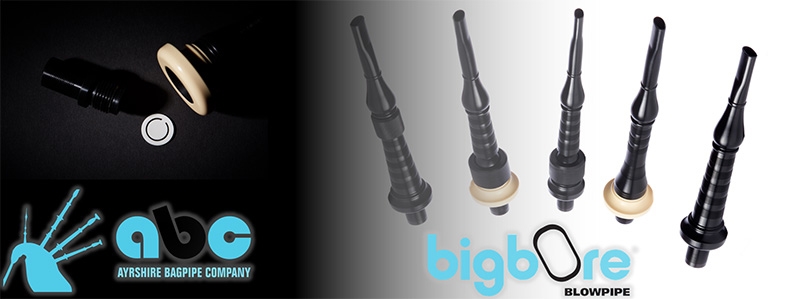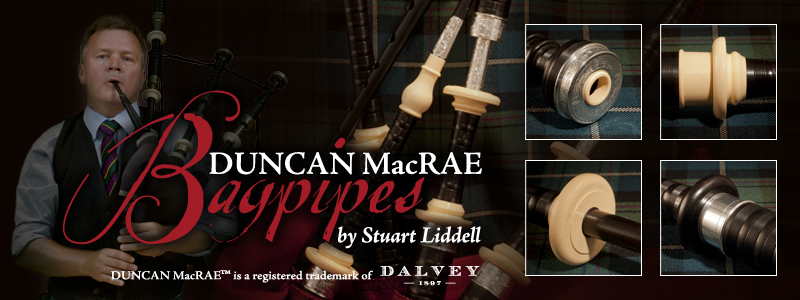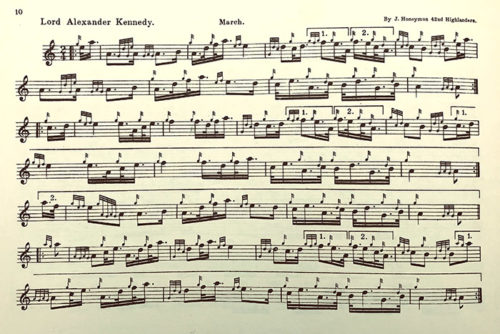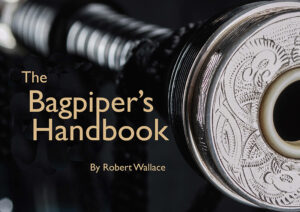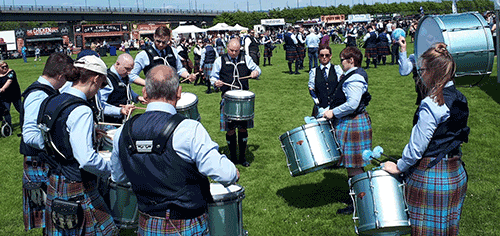
The study ‘Insights into Pipe Band Ensemble’ is dedicated to improving pipe drum ensemble outcomes in both set and medley competition.
With a focus on 2/4 march, strathspey, and reel music, the study follows a basic premise that some MSR pipe tunes are so rhythmically compatible with the music of the competition side drum, that their accompanying drum scores almost write themselves, while other MSR tunes are almost impossible to integrate with in any reasonable way.
By Alan Jones
The study is freely available on the website pipebandensemble.com. Its first few pages are included below, and show how bagpipe and side drum music integrate at a rudimentary level.
Melody line versus rhythm line: I define the piping melody line as those core notes in a pipe tune that deliver the basic underlying rhythm.
With a few exceptions, we don’t include embellishments in consideration of the piping melody line. For example, here are the first four bars of the 2/4 march, Coppermill, by Michael Grey with and without embellishments:

I define the piping rhythm line as this stripped down melody line interpreted in monotone (melody above, drum score below):

This study follows a basic premise that the best MSR side drum accompaniments result when:
1. The drum score integrates closely with the tune rhythm line.
2. The drum score interacts subtly and selectively with the tune melody line.
3. The rhythm line supports the one-bar rhythm phrasing needs of competition side drumming.
As an example of rhythm line integration we can look at:

(Pipers note: In drum-music notation, notes above the line typically indicate the right hand and notes below the line, the left hand.)
Note the high degree of rhythmic integration between the pipe tune and the drum score accompaniment in the example above. Not all pipe music allows for such rhythmic integration!
Melody line integration: Although the side drum is a mono-pitch instrument, it is well capable of integrating with a pipe tune at a melodic level. This is achieved through the use of dynamics, where different note volumes are used, subtly and selectively, to support the melody.
Some louder drumming notes can integrate with higher-pitched notes on the chanter, and some softer drumming integrating with lower notes.
Melody line high points: For the drum score writer, it is useful to know the peaks and troughs of the melody. High points have notes immediately in front, and behind, than those of lower pitch value, e.g:

Melody low-points have notes immediately in front, and behind, that are of higher pitch value, e.g:

and
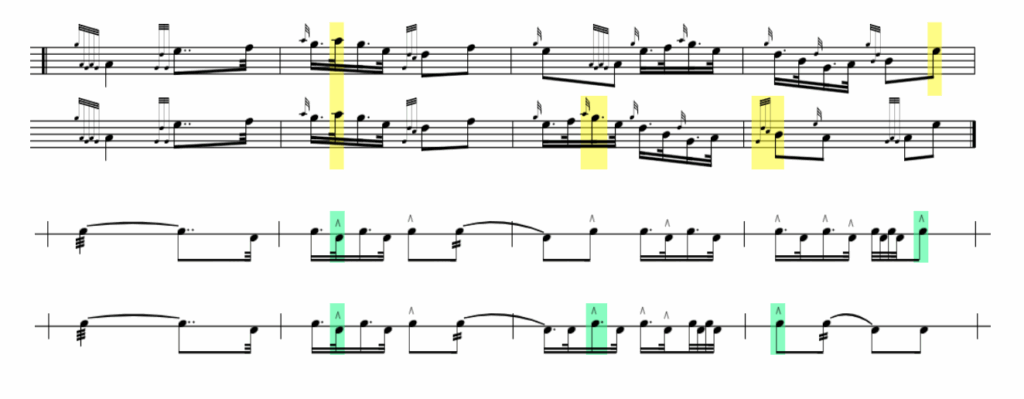
Note how the drum score writer makes use of accents to integrate with some of the tune’s melody high points. The drum score is now ‘anchored’ to the pipe tune both rhythmically and melodically.
- More at https://www.pipebandensemble.com

